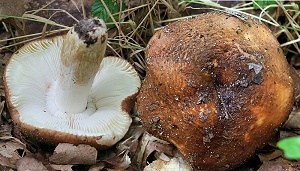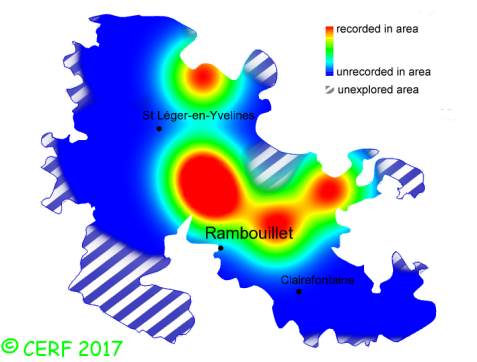| Russula graveolens Romell |
|
|
|
|
|
|
The cap is brown to violet; its margin is striate when mature. The cap surface is smooth, not viscid nor sticky. The stem is white, without ring. The flesh is whitish, not pink, turning brown or red when exposed to air; its taste is mild; the odour is of cooked seafood, herring or of iodine; its texture is grainy (breaking like a chalk stick). The gills are yolk yellow, adnexed, crowded . The spore print is ochre. This species is mycorrhizal. It grows on the ground, under broad-leaved trees, on a rather acid soil, with oak. The fruiting period takes place from July to November.
Chemical tests : flesh becoming dull green when in contact with iron sulphate;. Distinctive features : Olive-brown cap, variable; flesh and stem turning brown when pressed; flesh with mild taste, and odour of cooked crabmeat or shrimps; creamy-white gills, eventually yolk-yellow and stained with red; with deciduous trees Russula graveolens is quite rare and localised in the forest of Rambouillet, and is infrequent, more generally speaking . | ||
|
page updated on 14/01/18

